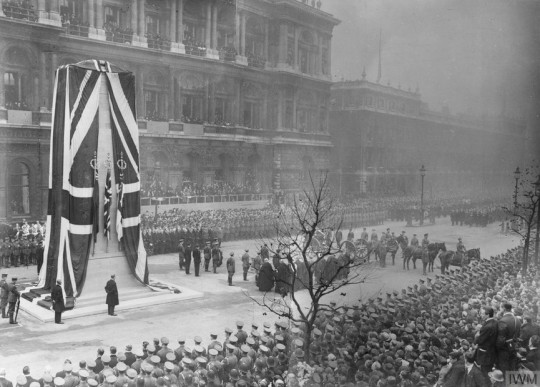#sir john french

The Cenotaph, pictured between 10:30 and 11AM on November 11, 1920. The casket of the Unknown Warrior, drawn by a gun carriage, is partially obscured behind a tree.
November 11 1920, London–The official Victory Parade, celebrating the Allied victory in the war, was held in July 1919. It featured a cenotaph–an empty tomb–commemorating all the soldiers of the British Empire who had fallen overseas, their bodies buried there. The 1919 cenotaph was a temporary construction, but it was so popular (over a million people visiting the structure in the week after the parade) that there were soon calls for a permanent version.
The permanent Cenotaph, built on the same site in Whitehall as the temporary one, was built between May and November 1920, ahead of the unveiling on the second anniversary of the Armistice. As part of the ceremony, it was also decided to exhume an unidentified British soldier from France and bury him as the Unknown Warrior in Westminster Abbey (not in the Cenotaph itself, which was intentionally empty).
At 11 AM, exactly two years after the Armistice went into effect, King George V pulled a lever, revealing the Cenotaph from under the two large Union flags that had covered it. The crowd stood in silence for two minutes, the “Last Post” was sounded on bugle, and the King laid a wreath before the unveiled cenotaph before the procession continued to Westminster Abbey. There, the pallbearers, which included Marshals Haig and French and Admiral Beatty, bore the casket inside, where it was interred after a brief and solemn ceremony.
Until closed at midnight, crowds filed by both the Cenotaph and the tomb in Westminster Abbey. Within a week, well over a million had paid their respects, and the Cenotaph was partially buried in a pile of wreaths and flowers over ten feet high.
